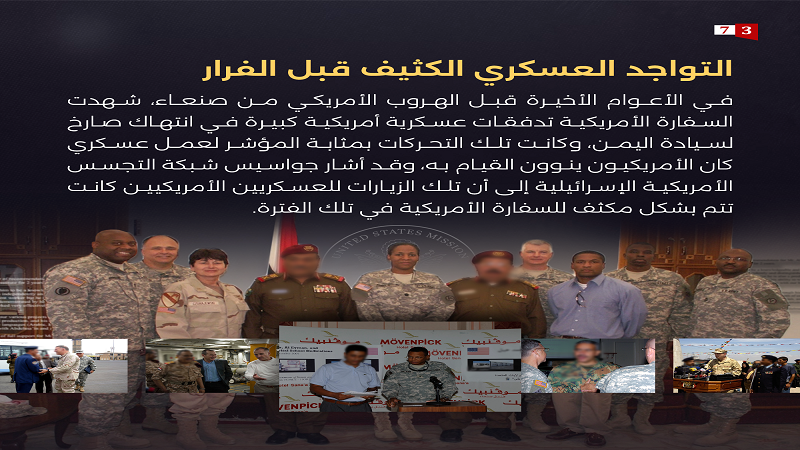The September 21, 2014 Revolution: A Turning Point That Sealed the Fate of the U.S. Embassy in Yemen

Yemen: The September 21, 2014 revolution marked the final blow to the U.S. Embassy in Yemen, shattering its plans and malicious conspiracies.
Al-Hamdani added: "Before leaving, the American embassy staff destroyed all reports, documents, and papers in their offices under direct orders and supervision from the U.S. ambassador. After the destruction, the ambassador gathered all employees to inform them of the embassy's closure, assuring them that they would be contacted later and that their salaries would continue until further notice."
He explained that after the U.S. Embassy and its staff left, Washington focused on managing its networks through local agents within the organizations and agencies it had established over the past decades.
In this regard, Al-Hamdani confirmed that "the U.S. Embassy significantly intensified its intelligence activities on military, security, political, and economic matters after leaving Sana'a, using its arms and collaborators who had been recruited and built relationships with over the years."
The most dangerous spy, Abdul Qader Al-Saqqaf, added in this context: "Ultimately, despite all their maneuvers and attempts at intimidation, they demonstrated their weakness when they left in a humiliating manner, destroying what they could in the embassy. Their disgraceful exit was telling, reflecting how the so-called great and arrogant power ended up, all due to their arrogance and oppression."
Preparing for the Aggression
After dismantling all of Washington's networks within Yemen, the U.S. turned to military preparations to launch a fierce war on Yemen, aiming to crush the September revolution. There were also American agendas before the September 21 revolution, intending to intervene militarily in Yemen under the pretexts of fighting Al-Qaeda and ISIS, which were being revived in various Yemeni provinces, to launch a destructive war under the name of "counterterrorism," similar to what happened in Iraq, Syria, and Libya.
In this context, spy Hisham Al-Wazir said: "The preparations for the aggression were premeditated. From my personal observations, I noticed a large number of American military personnel visiting the U.S. Embassy in Sana'a intensively in the two years before the aggression, particularly in the last year. They came in large numbers. At the same time, I came across studies shared with the agency from institutes like the Rand Corporation—these were internal studies not authorized for public release, indicating the necessity of dealing militarily with the so-called rebellious forces."
He added: "Tami mentioned the military preparations in the south and the use of the south as a military launchpad to deal with Ansarullah and their control over Sana'a. The American idea, as Tami and Herbie Smith confirmed to me, was that the war would be temporary, lasting three to six months at most, to force Ansarullah into negotiations and acceptance of the American terms at that time."
Al-Wazir continued in his confessions: "A very important detail that personally confirmed to me the extensive preparations for the aggression was the request for all U.S. agency projects and all UN projects to provide the coordinates of their buildings in Sana'a. Everyone was asked to submit their coordinates, either by GPS or by marking them on Google Earth and submitting them." He noted that he, along with spies Shaif Al-Hamdani and Abdul Hamid Al-Ajami, were tasked with this mission of gathering coordinates.
-
07:37
Al-Rowaishan: We affirm that Yemen faced attempts and pressures, but it only responded when the aggression against Gaza stopped.
07:37
Al-Rowaishan: We support our brothers in Palestine and will continue on this path, regardless of the pressures.
07:37
Al-Rowaishan: The victory achieved in Gaza is a victory by all standards, the resilience of the fighters in Gaza has proven that the standards of strength are different.
07:36
Al-Rowaishan: We thank our brothers in the Sultanate of Oman for their efforts, we affirm to those who have been released that they should convey the image of Yemen to their people.
07:36
Al-Rowaishan: We affirm that if the Israeli enemy does not adhere to the signed agreements, Yemen is closely monitoring, observing the situation.





